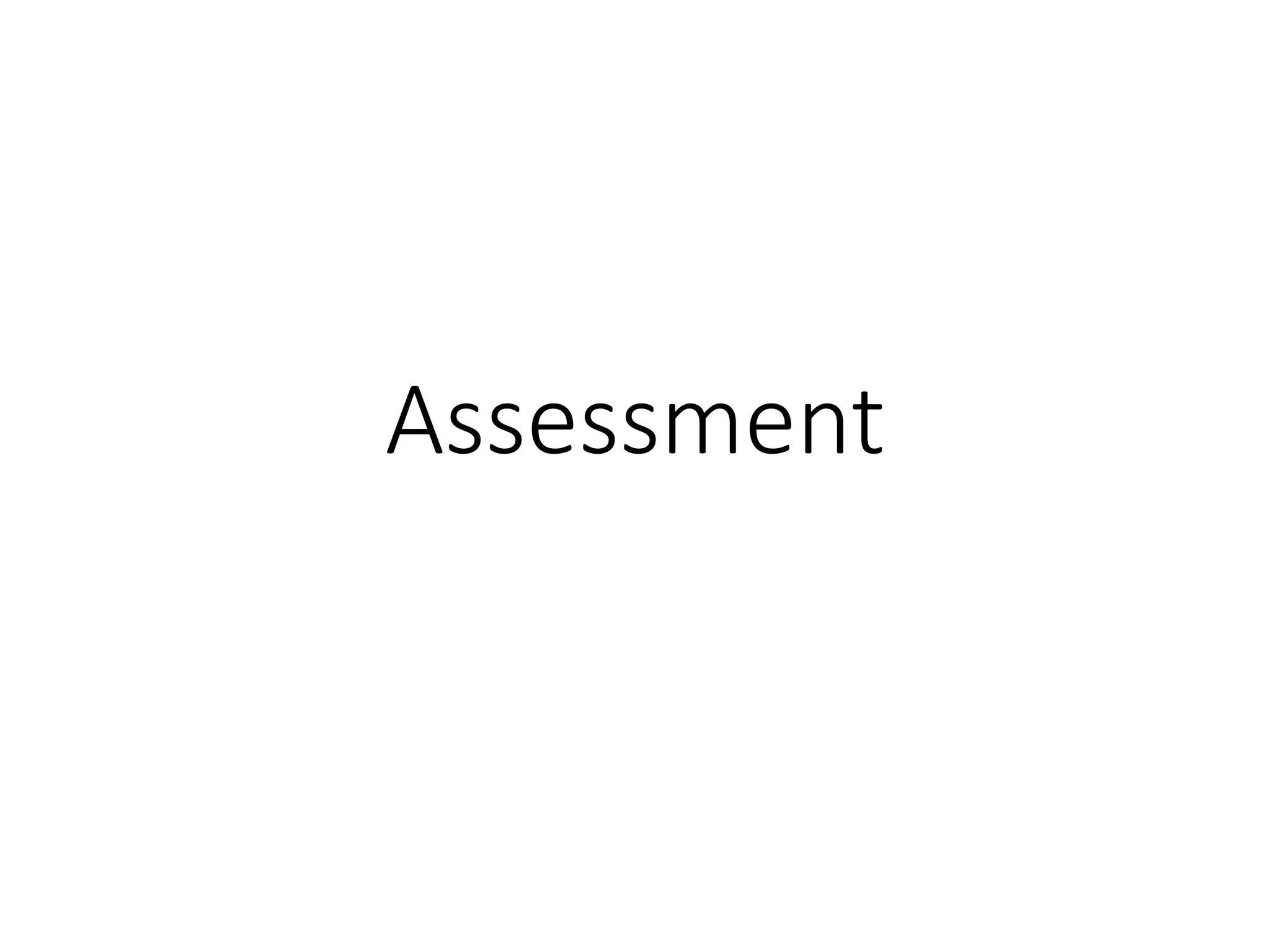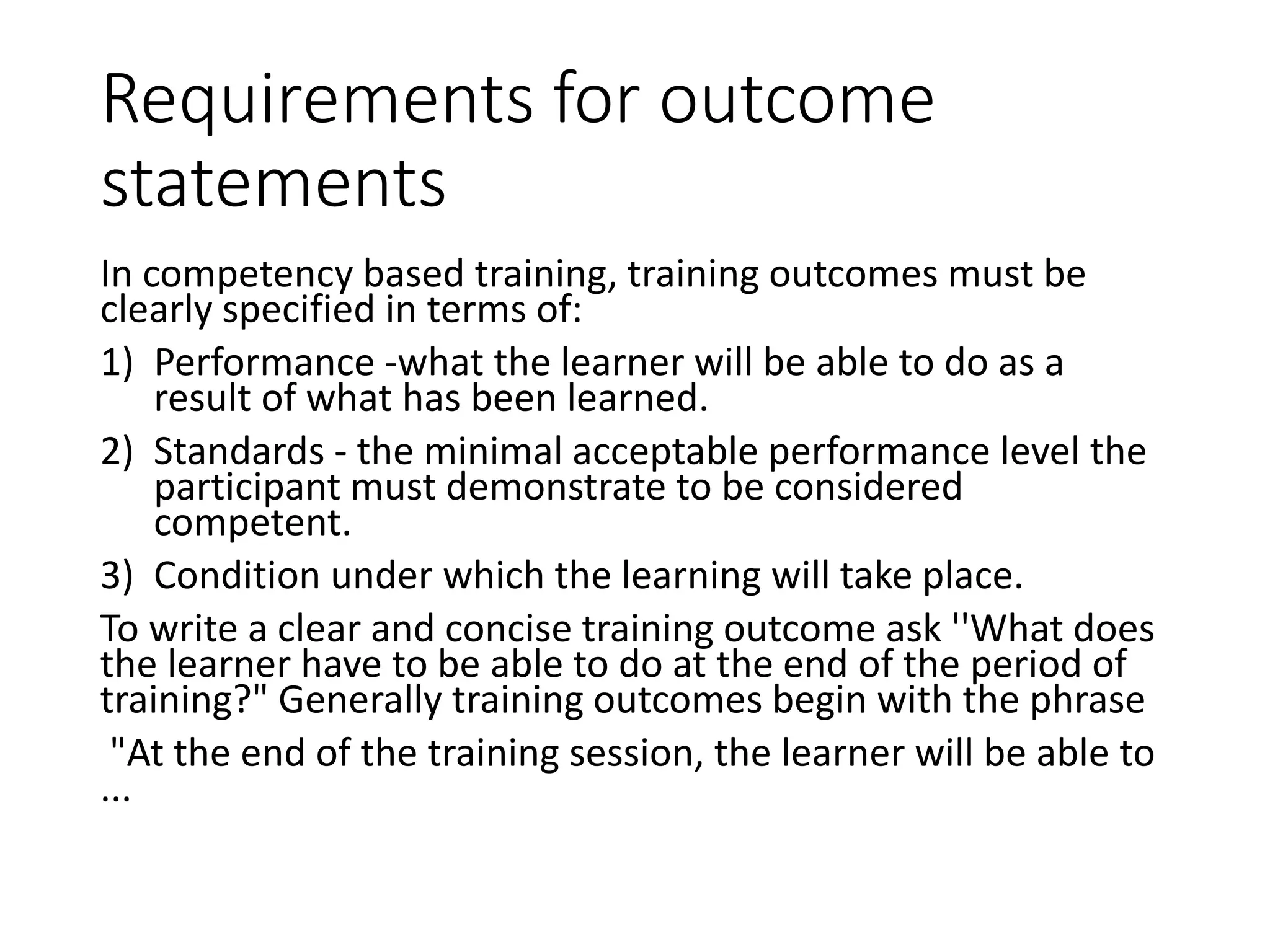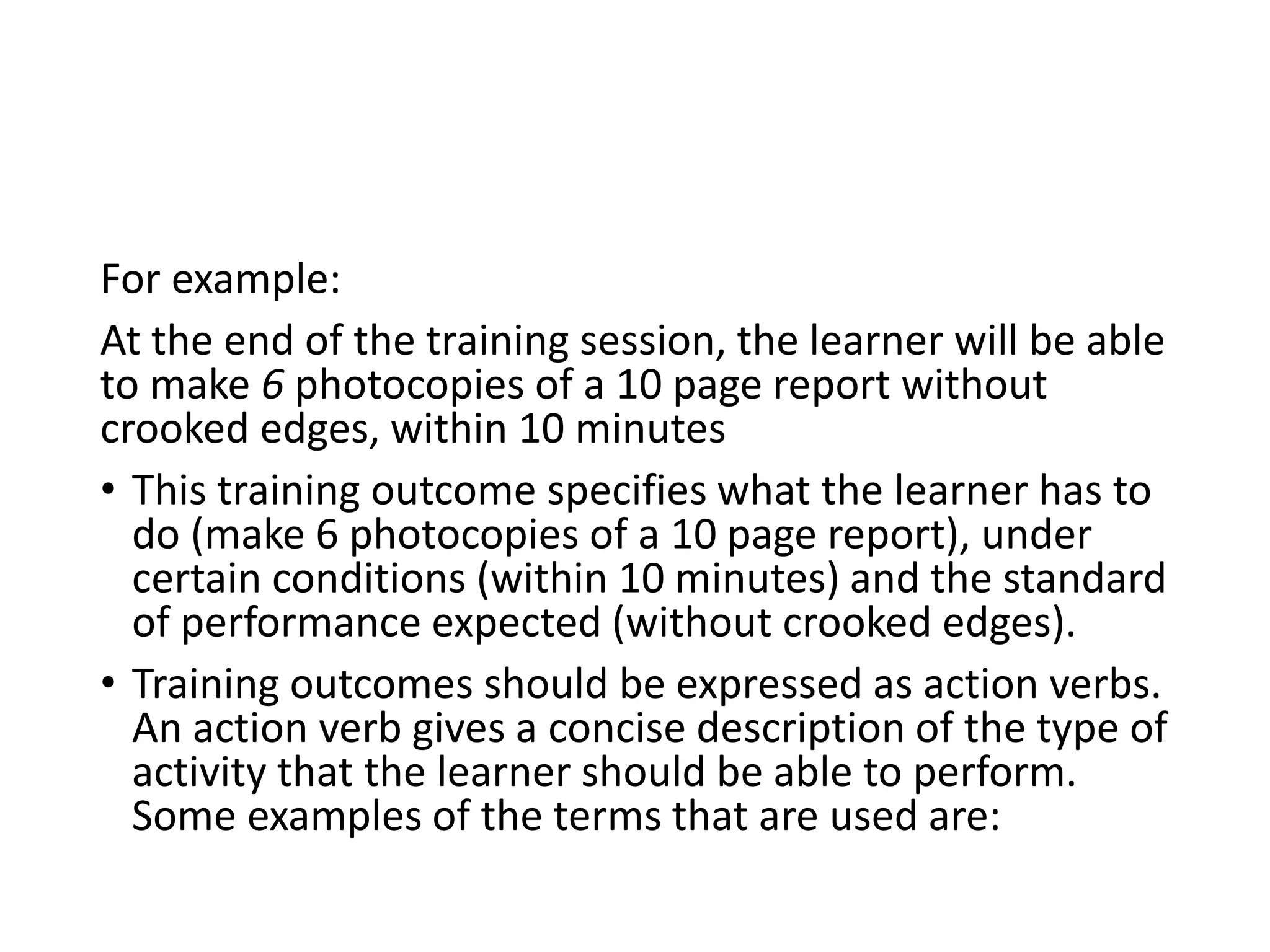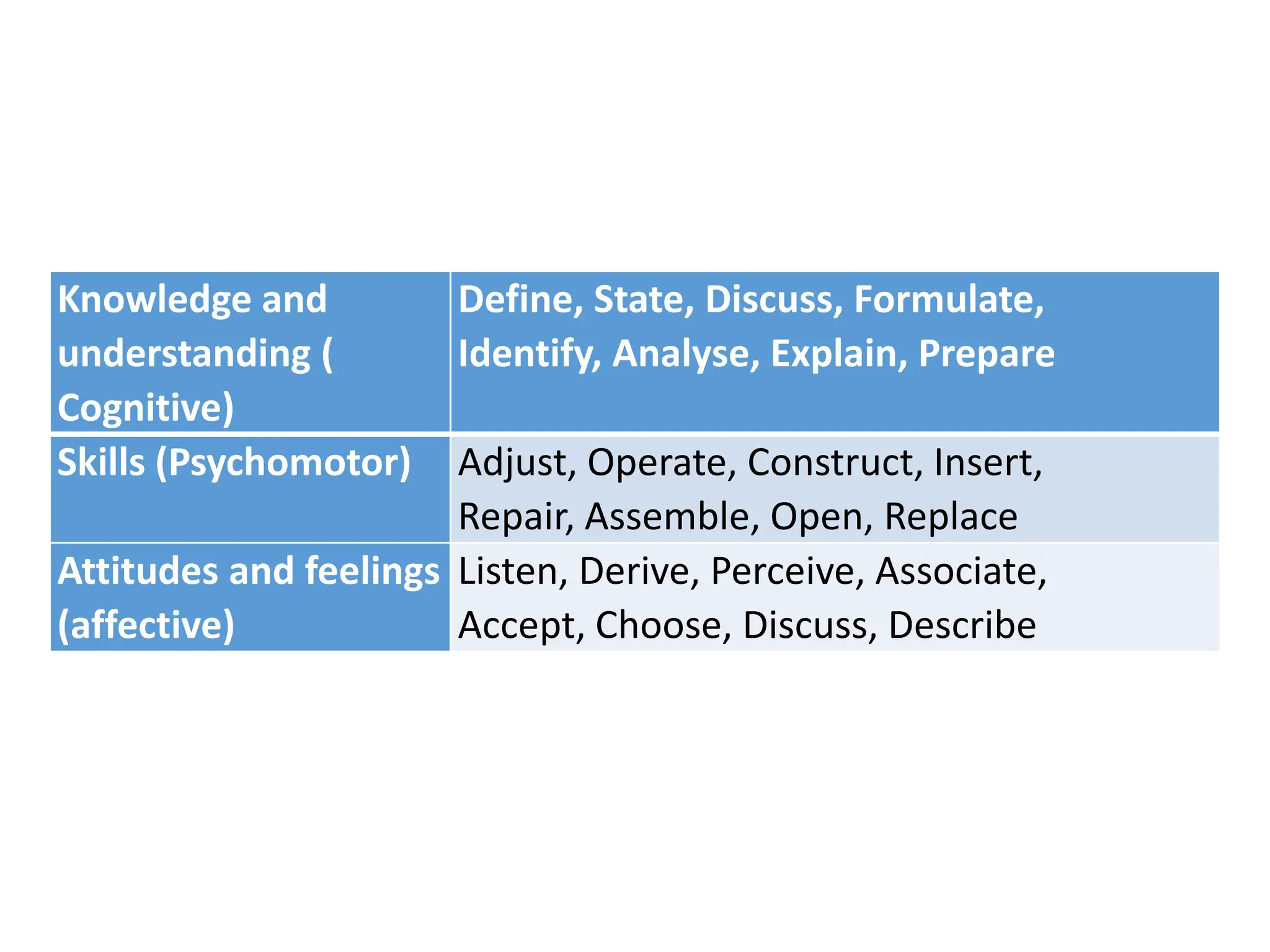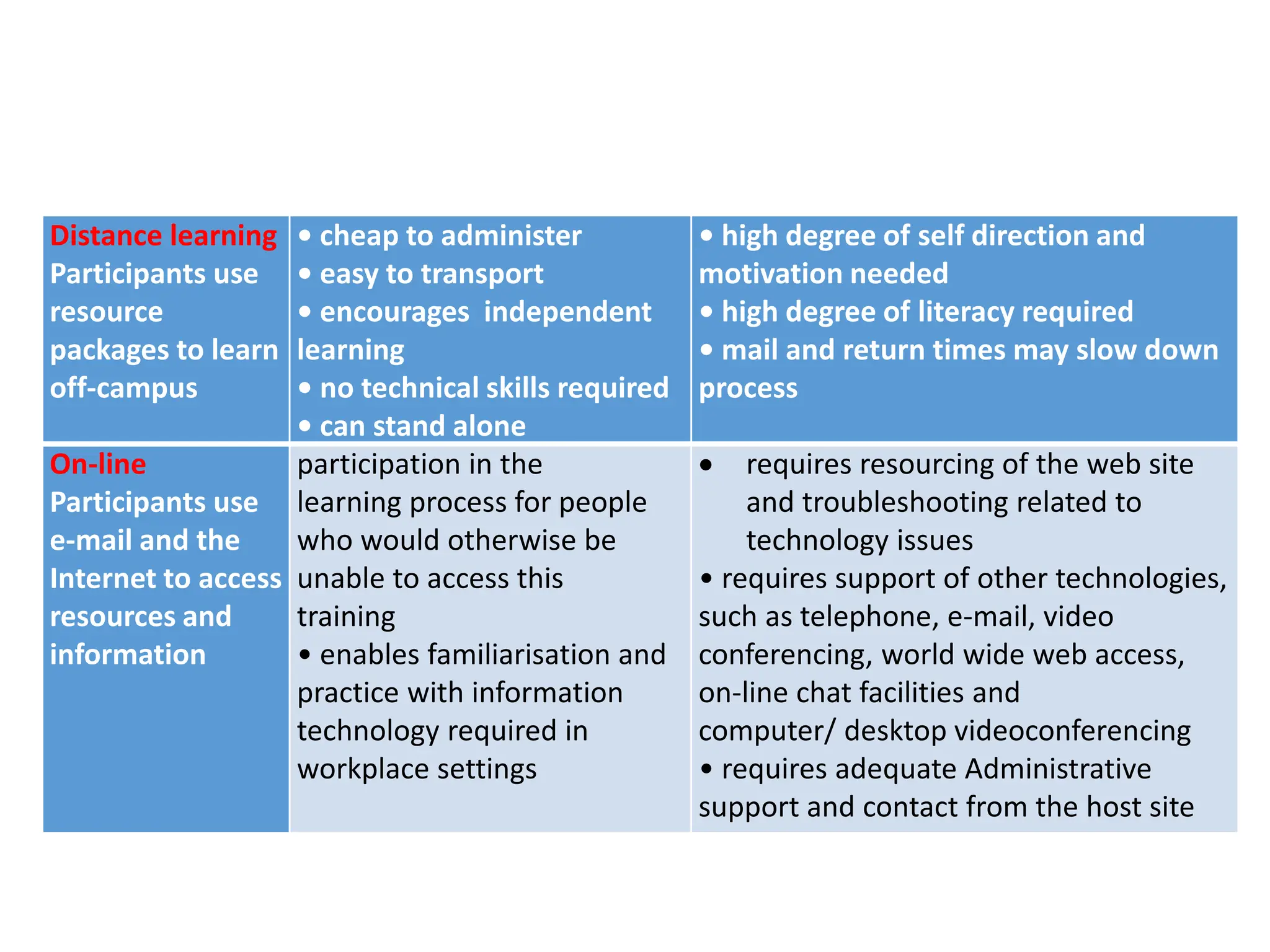This document defines assessment and different types of assessment. It discusses assessment as the process of collecting evidence of student learning and making judgements about whether learning standards have been met. Formative assessment is used for learning and getting feedback, while summative assessment evaluates learning at the end of a period. Assessment can be criterion-referenced against standards or norm-referenced by comparing students. Competency-based assessment is evidence-based and criterion-referenced. Training outcomes clearly describe the skills and knowledge students will demonstrate after training. Different training approaches like off-the-job, on-the-job, and distance learning each have advantages and limitations.
